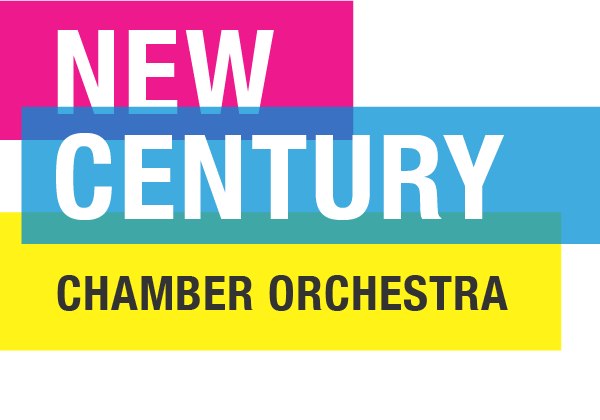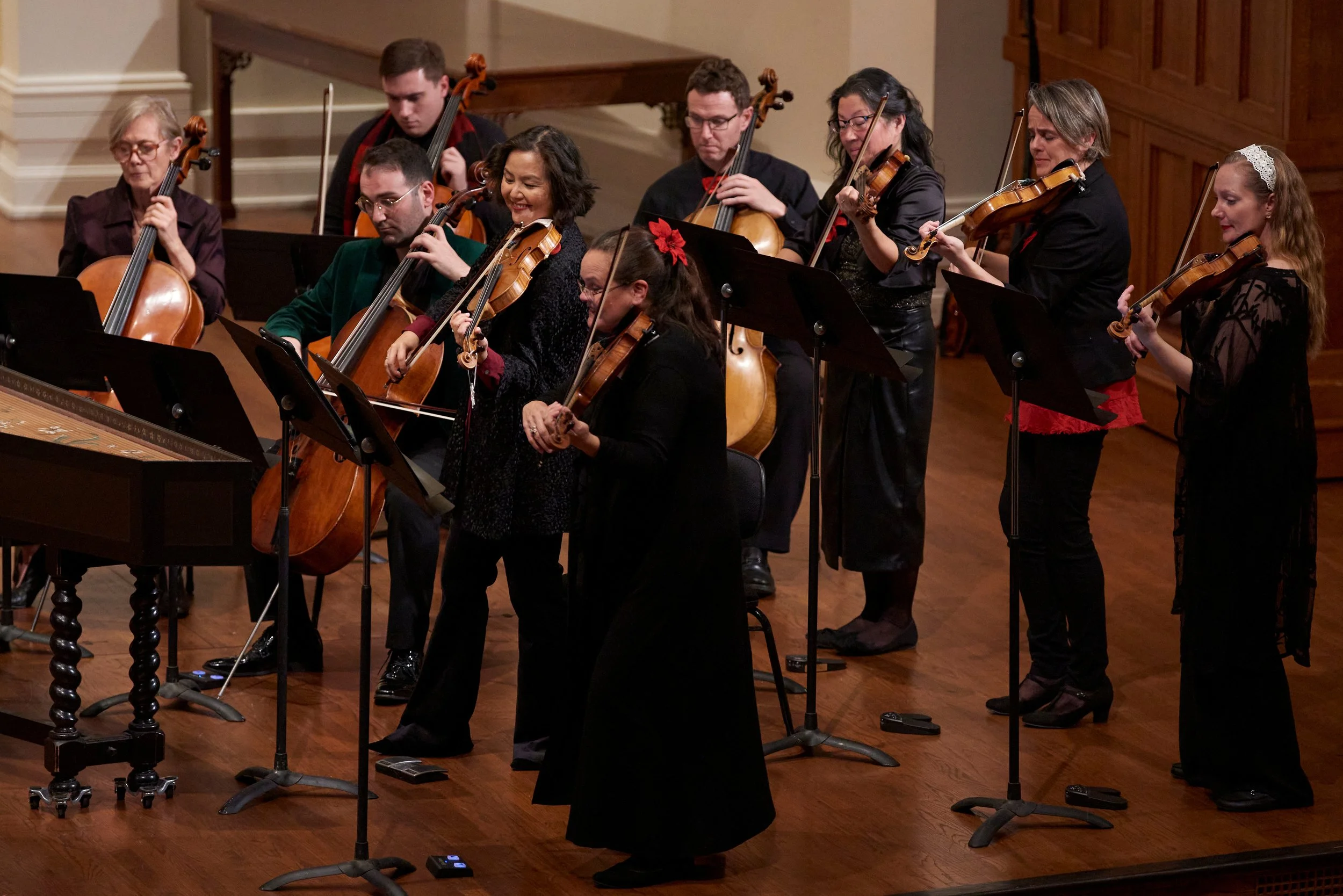Discover the Unique World of Chamber Orchestras: What Sets New Century Apart?
New Century’s Visitations concert, November 2023. Photo by Stefan Cohen.
Whether you’re a seasoned New Century fan or a new concertgoer, you may have wondered,
“What makes a chamber orchestra different from a traditional symphony orchestra?”
“Where is New Century’s conductor?”
“Why do the musicians perform standing?”
Let’s dive into what defines a chamber orchestra and explain how New Century’s innovative, conductorless approach sets us apart.
Chamber Orchestra vs. Symphony Orchestra
New Century’s Christmas Ornaments concert, December 2023. Photo by Stefan Cohen.
A chamber orchestra is a smaller ensemble of musicians, typically consisting of 10 to 40 players. This distinguishes it from a full symphony orchestra, which can have 80 or more members. The term “chamber” refers to the intimate settings where these orchestras originally performed, such as royal courts or private salons. In these spaces, the close proximity allowed for direct communication between musicians and the audience.
Today, chamber orchestras are known for their flexibility, both in size and the type of music they perform. They often focus on a wide repertoire that spans Baroque masterpieces to modern contemporary works, all emphasizing transparency and intricate musical dialogue. In smaller ensembles like this, each musician plays a critical role, making the performance feel more personal and detailed.
Why Does New Century Perform Standing?
New Century’s Christmas Ornaments concert, December 2023. Photo by Stefan Cohen.
One of the most distinctive features of New Century Chamber Orchestra is that its musicians (with exceptions, such as our cellists) perform standing rather than seated. This performance style enhances both the energy and dynamics of their music, creating a unique concert experience. Here’s why this approach works so well for New Century:
Increased Physical Engagement: Standing allows musicians to move more freely, creating a stronger physical connection to the music. This freedom of movement helps express the emotional and rhythmic nuances of each piece more vividly. As Music Director and Concertmaster Daniel Hope explained in his March 2024 Virtual Greenroom interview with San Francisco Classical Voice, “...you are much freer because you’re not constricted...you just open, and this open feeling has a direct result on your sound.”
Heightened Communication: Without the restriction of sitting, standing facilitates better visual and non-verbal communication between the players. This is crucial for an ensemble like New Century, which performs without a conductor, relying on eye contact, body language, and subtle cues from each other to stay in sync.
Stronger Audience Connection: The act of standing creates a more dynamic and visually engaging performance. It allows the audience to feel the intensity and physicality of the music on a deeper level, enhancing the overall concert experience.
For New Century Chamber Orchestra, standing is not just a logistical choice, but a key part of their artistic identity. It allows the ensemble to deliver performances that are energetic, cohesive, and deeply immersive.
Why Does New Century Perform Without a Conductor?
New Century’s Visitations concert, November 2023. Photo by Stefan Cohen.
New Century is one of only a handful of conductor-less chamber orchestras in the world! This unique approach fosters a deep level of collaboration and connection among the musicians. Here’s why performing without a conductor works so well for this leading chamber ensemble:
Collaborative Musicianship: Without a conductor, the musicians share responsibility for interpreting the music. Each player contributes to decisions about tempo, phrasing, dynamics, and overall interpretation. This results in a more democratic and interactive process, where the performance feels organic and unified.
Enhanced Communication: Without a conductor at the podium, the musicians rely on eye contact, gestures, and body language to coordinate their performance. This close communication creates a strong sense of ensemble, where each musician is fully engaged in shaping the music.
Spontaneity and Flexibility: Performing without a conductor allows for greater spontaneity. The absence of a single leader opens the door for the music to evolve naturally as the musicians respond to each other and to the moment. This can result in performances that feel fresh, alive, and responsive.
Honoring Tradition: This conductor-less approach also connects to the history of chamber music. Many ensembles during the Baroque and Classical periods did not use conductors, relying instead on the leadership of the concertmaster or principal musician. New Century honors this historical tradition while bringing it into a contemporary context.
New Century Chamber Orchestra’s conductor-less performances are marked by precision, passion, and power, resulting in concerts that are vibrant, spontaneous, and deeply connected. Each performance is a unique and dynamic experience, giving audiences the opportunity to witness the magic of music being made through collective leadership and collaboration.
Experience this unique chamber orchestra for yourself during the 2024-25 season, starting in November with Vivaldi: Recomposed. Learn more about their concert season and upcoming performances on the New Century Chamber Orchestra website.




